
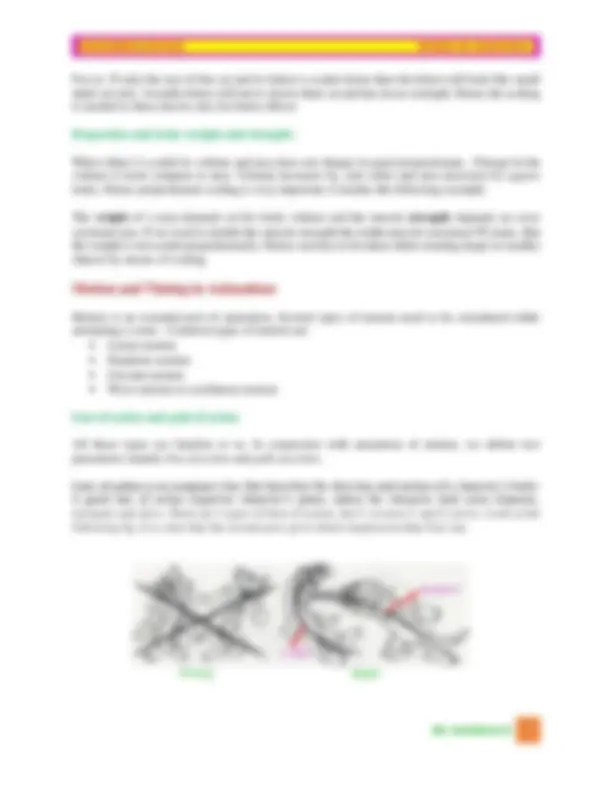
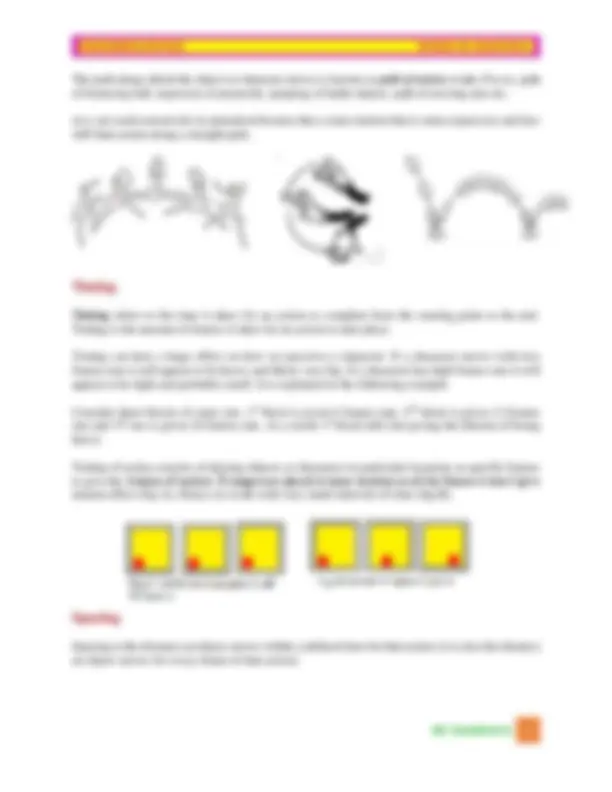

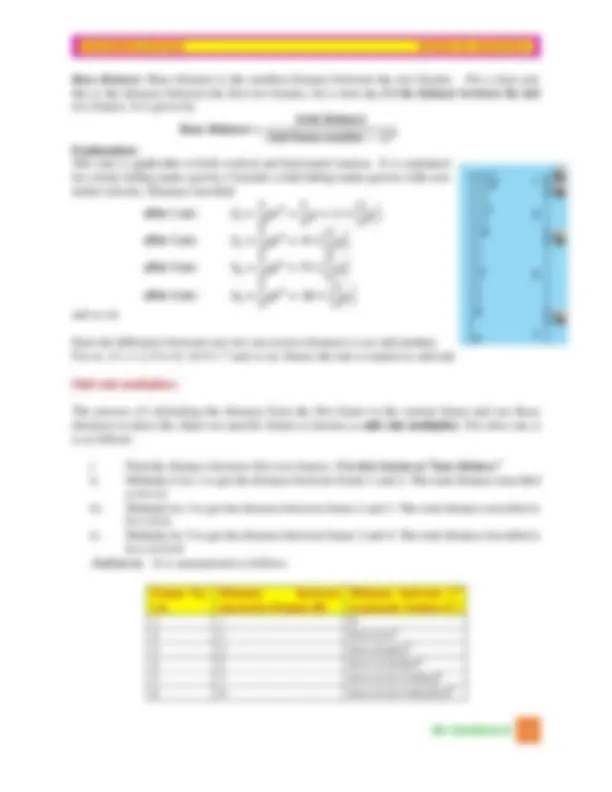
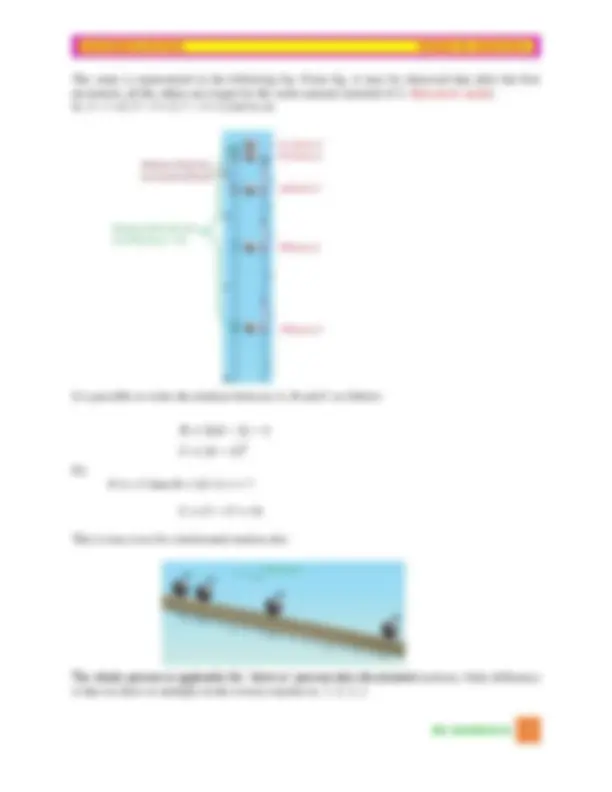
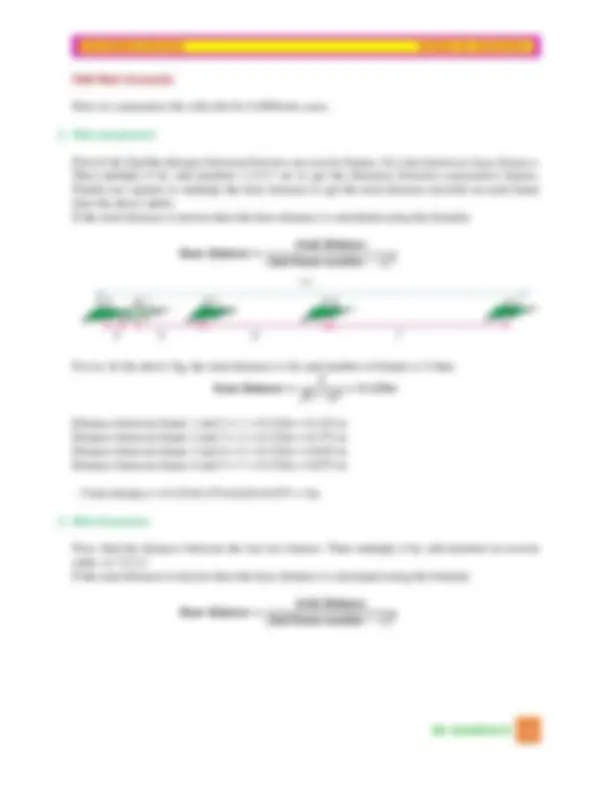
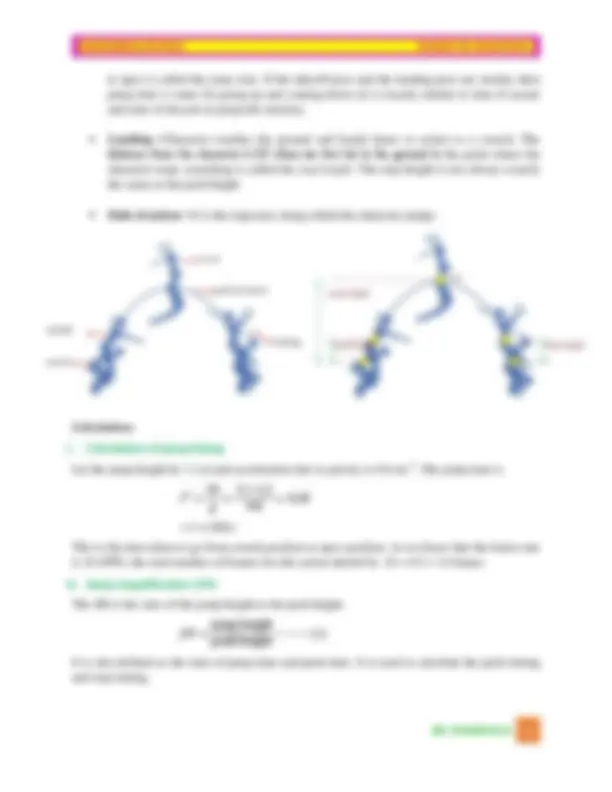
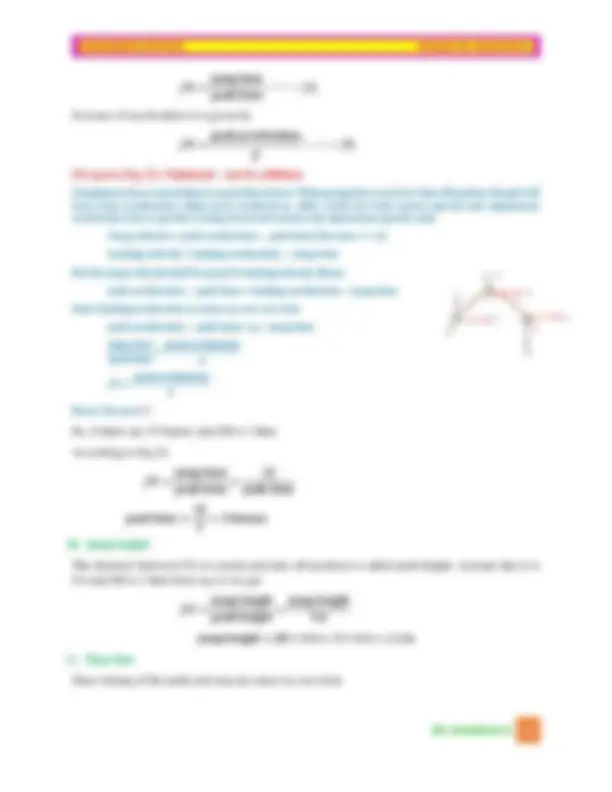



Study with the several resources on Docsity

Earn points by helping other students or get them with a premium plan


Prepare for your exams
Study with the several resources on Docsity

Earn points to download
Earn points by helping other students or get them with a premium plan
Community
Ask the community for help and clear up your study doubts
Discover the best universities in your country according to Docsity users
Free resources
Download our free guides on studying techniques, anxiety management strategies, and thesis advice from Docsity tutors
A comprehensive overview of the physics principles underlying animation, focusing on kinematics, dynamics, and timing. It delves into concepts like frame rate, scale, line of action, path of action, and timing, illustrating them with examples and calculations. The document also explores the odd rule for calculating distances between frames during accelerated and decelerated motion, and provides insights into jump timing and walk timing.
Typology: Thesis
1 / 15

This page cannot be seen from the preview
Don't miss anything!










Animation is a method of photographing successive drawings or models to create an illusion of movement in a sequence. Since our eyes can retain an image for nearly 0.1 s, when multiple images appear fast, the brain blends them into a single moving image.
In initial days animation was done by drawing or painting pictures on transparent celluloid sheets and then photographed but today most of the animation work is done with computer-generated imagery or CGI.
Animation is inherently fake. It’s not real actors on real sets—it is entirely manipulated from a computer. Even though animators sometime break the laws of physics animation requires an understanding of physics and an animator should have a basic understanding of mechanics and bio-mechanics. Principles of physics are universal, they can be applied to cartoon-style drawings as well as CGI and make audiences to escape reality and enter a fantasy world!
Since animation is an illusion of movement in sequence one need to consider the physics of motion. There are two categories in this. They are
Kinematics The study of motion of bodies without considering the actual cause for the motion is known as kinematics. Here mass and forces are not considered.
Dynamics The study of motion of bodies by considering the actual cause for the motion is known as dynamics. Here mass and forces are taken into consideration
In both of these we have two subgroups. They are
Inverse: It is the study of motion when both the starting and ending points are known. Here one typically knows where to go, but needs to figure out how to do it. It is also known as backward. Ex, in robots the motion of its joint angles in robots is inverse or backward
Joint angles End effector
DR. NAGARAJA D 2
Forward: It is the study of motion when only the starting point is given. Here the goal is to predict the final destination. Ex, end effector movement in the robots is forward motion. It only moves towards the destiny
In animation successive drawings or pictures are made. Each picture is treated as frame. To create the appearance of motion from these images, frames shall be displayed.
Definition: The number of frames displayed in one second for smooth movement effect is known as frame rate , or frames per second (FPS)
The human brain can process only about 10 to 12 FPS, ie, individuals can distinguish separate still pictures in a series with a frame rate under 12 FPS. 12 frames do produce the motional effect but may look choppy (recall very old black and white movies!!-may be Charlee Chaplin movies). Hence the frame rate has to be increased to produce smooth moving effects. In cinema, a frame rate of 24 frames per second is often used (Different video formats have different FPS). For TV the frame rate is 30 FPS
Animation of large objects (cricket field, railway stations, dams etc) is not done in their actual size. Their size must be reduced several times. This is nothing but scaling. Scaling is not only done for larger dimension objects. Even smaller dimensional objects (insects, body organs etc) also need scaling.
Definition: The ratio of animation size to the actual size of the object is known as scale or scale of animation. It is also defined as the ratio of pixels of the animation to the physical units of length.
Scaling is not only done for altering the sizes of the characters but also done in other aspects such as movement, energy etc. This is essential to distinguish between other parameters such as weight and strength, younger and older etc.
24 FPS
12 FPS
Improper scaling Proper scaling
The path along which the object or character moves is known as path of action or arc****. For ex, path of bouncing ball, trajectory of projectile, jumping of ballet dancer, path of moving arm etc.
Arcs are used extensively in animation because they create motion that is more expressive and less stiff than action along a straight path.
Timing refers to the time it takes for an action to complete from the starting point to the end. Timing is the amount of frames it takes for an action to take place.
Timing can have a huge effect on how we perceive a character. If a character moves with less frames rate it will appear to be heavy and likely very big. If a character has high frames rate it will appear to be light and probably small. It is explained in the following example
Consider three blocks of same size. 1st^ block is given 6 frames rate, 2nd^ block is given 12 frames rate and 3rd^ one is given 24 frames rate. As a result 1st^ block falls fast giving the illusion of being heavy
Timing of action consists of placing objects or characters in particular locations at specific frames to give the illusion of motion. If images are placed at same location in all the frames it won’t give motion effect (fig-A). Hence we work with very small intervals of time (fig-B).
Spacing is the distance an object moves within a defined time for that action (it is also the distance an object moves for every frame of that action)
The main difference between timing and spacing is that timing refers to everything that happens over time whereas spacing refers to how much fast something moves. It is illustrated as follows
Consider two balls moving same horizontal distance in same time. Assume the top ball will be moving slowly to begin with, then speed up and then slow down again at the end. The bottom ball will just begin and keep a constant speed until the end. Both will be in the same position at the beginning, middle and end of the animation. To achieve this we are going to change the spacing. If we have more drawings near the starting pose, one or two in the middle, and more drawings near the next pose lesser drawings make the action faster and more drawings make the action slower.
A body moving in a straight line is said to be in linear motion. It always move along same direction. Ex: a ball rolling on the inclined plane, a ball moving on a horizontal plane, a stone falling under gravity etc
In linear motion if the body travels without acceleration (or deceleration) then it is known as uniform motion. Here the net force acting on the object is zero and distance travelled between consecutive frames is same. Hence timing is very easy. If the speed is less the spacing between the frames is less. If the speed is more the spacing is also more
If the force is varying with respect to time then it is variable force. Ex, force on a charge in variable magnetic and electric field, spring force etc. Timing of the action is very difficult for motions due to variable forces.
Timing for variable force
Normally all the forces exerted by us in everyday life are variable. Force applied during walking, running, jumping, skating, dancing etc is a variable one. If you break the motion into smaller segments then force in each segment is treated as constant and timing becomes easier.
In the below fig, jumping (by girl) is divided into 3 segments. Force is nearly constant over each segment. The timing is very short for each of these segments
Timing for constant force and acceleration
If the applied force is constant then the body will move with constant acceleration. The acceleration depends on the direction of the applied force. There are 3 possibilities
i. If a constant force is applied on a body at rest then it accelerates ii. If a constant force is applied in the direction of motion then the body is accelerated iii. If a constant force is applied in the opposite direction to motion then it is decelerated.
For such type of motions timing is done with odd rule
Odd rule
The distance travelled by the object between two successive frames is calculated by odd rule. According to this rule
“The distance travelled between two successive frames is obtained by multiplying the base distance by odd numbers 1,3,5,7 etc during accelerated motion and by multiplying the base distance by odd numbers 7,5,3,1 etc during decelerated motion”
Base distance: Base distance is the smallest distance between the two frames. For a slow-out, this is the distance between the first two frames; for a slow-in, it’s the distance between the last two frames. It is given by
Base distance =
total distance (last frame number − 1 )^2 Explanation: This rule is applicable to both vertical and horizontal motion. It is explained for a body falling under gravity. Consider a ball falling under gravity with zero initial velocity. Distance travelled
after 1 sec 𝑆 1 =
after 2 sec 𝑆 2 =
after 3 sec 𝑆 3 =
after 4 sec 𝑆 4 =
and so on
Here the difference between any two successive distances is an odd number. For ex, 4-1 = 3; 9-4 =5; 16-9 = 7 and so on. Hence the rule is named as odd rule
Odd rule multipliers
The process of calculating the distance from the first frame to the current frame and use these distances to place the object on specific frames is known as odd rule multiplier. For slow-out, it is as follows
i. Find the distance between first two frames. It is also known as “base distance” ii. Multiply it by 1 to get the distance between frame 1 and 2. The total distance travelled is 0+1= iii. Multiply by 3 to get the distance between frame 2 and 3. The total distance travelled is 0+1+3= iv. Multiply by 5 to get the distance between frame 3 and 4. The total distance travelled is 0+1+3+5= And so on…It is summarized as follows
Frame No. (A)
Distance between successive frames (B)
Distance between 1st to present frames (C) 1 -- 0 2 1 0+1=1=1^2 3 3 0+1+3=4=2^2 4 5 0+1+3+5=9=3^2 5 7 0+1+3+5+7=16=4^2 6 9 0+1+3+5+7+9=25=5^2
Odd Rule Scenarios
Here we summarize the odd rule for 4 different cases.
1. Slow-out process
First of all, find the distance between first two successive frames. It is also known as base distance. Then multiply it by odd numbers 1,3,5,7 etc to get the distances between consecutive frames. Finally use squares to multiply the base distance to get the total distance traveled on each frame (See the above table) If the total distance is known then the base distance is calculated using the formula
Base distance =
total distance (last frame number − 1 )^2
For ex: In the above fig, the total distance is 2m and number of frames is 5 then Base distance =
Distance between frame 1 and 2 = 1 × 0.125m = 0.125 m Distance between frame 2 and 3 = 3 × 0.125m = 0.375 m Distance between frame 3 and 4 = 5 × 0.125m = 0.625 m Distance between frame 4 and 5 = 7 × 0.125m = 0.875 m
Total distance = 0.125+0.375+0.625+0.875 = 2m
2. Slow-in process
First, find the distance between the last two frames. Then multiply it by odd numbers in reverse order, ie 7,5,3, If the total distance is known then the base distance is calculated using the formula
Base distance =
total distance (last frame number − 1 )^2
In the above fig, the total distance is 0.9 m and number of frames is 4 then Base distance =
Distance between frame 4 and 3 = 5 × 0.1m = 0.5 m Distance between frame 3 and 2 = 3 × 0.1m = 0.3 m Distance between frame 2 and 1 = 1 × 0.1m = 0.1 m
Total distance = 0.5 + 0.3 + 0.1 = 0.9 m
3. Jumping up process
Consider a girl jumping up. The whole process is divided into 3 small intervals (or 3 frames). Let the total height is 0.3 m, then
Base distance =
Distance between frame1 and 2 = 1 × 0.075m = 0.075 m Distance between frame2 and 3 = 3 × 0.075m = 0.0 22 5 m
Total distance = 0.075 + 0.225 = 0.3 m
4. Jumping down process
Consider a girl jumping down through a distance 0.5 4 m. The whole process is divided into 4 frames, then Base distance =
Distance between frame 4 and 3 = 5 × 0.06m = 0.3 m Distance between frame 3 and 2 = 3 × 0.06m = 0.18 m Distance between frame 2 and 1 = 1 × 0.06m = 0.06 m
Total distance = 0.3 + 0.18 + 0.06 = 0.54 m
to apex is called the jump time. If the takeoff pose and the landing pose are similar, then jump time is same for going up and coming down (it is exactly similar to time of ascent and time of descent in projectile motion).
Landing —Character touches the ground and bends knees to return to a crouch. The distance from the character’s CG when her feet hit to the ground to the point where the character stops crouching is called the stop height. The stop height is not always exactly the same as the push height
Path of action —It is the trajectory along which the character jumps
Calculations
i. Calculation of jump timing
Let the jump height be 1.2 m and acceleration due to gravity is 9.8 ms-2. The jump time is
𝑡^2 =
This is the time taken to go from crouch position to apex position. As we know that the frame rate is 24 (FPS), the total number of frames for this action should be 24 × 0.5 = 12 frames
ii. Jump magnification (JM)
The JM is the ratio of the jump height to the push height.
𝐽𝑀 =
jump height push height
It is also defined as the ratio of jump time and push time. It is used to calculate the push timing and stop timing.
jump time push time
In terms of acceleration it is given by
𝐽𝑀 =
push acceleration 𝑔
[To prove Eq (3): (Optional – not in syllabus) Jumping motion is equivalent to projectile motion. While going from crouch to take off position the girl will have some acceleration called push acceleration. After wards her body moves upward and experiences acceleration due to gravity. During downward motion she experiences gravity only. Jump velocity = push acceleration × push time (because v = at) Landing velocity = landing acceleration × jump time But the jump velocity shall be equal to landing velocity. Hence push acceleration × push time = landing acceleration × jump time Since landing acceleration is same as g we can write push acceleration × push time = g × jump time jump time push time =
push acceleration 𝑔
𝐽𝑀 = push acceleration𝑔
Hence the proof ] Ex, if there are 15 frames and JM is 3 then According to Eq (2)
𝐽𝑀 =
jump time push time
push time
push time =
= 5 frames
iii. Jump height
The distance between CG at crouch and take off position is called push height. Assume that it is 0.4 and JM is 3 then from eq (1) we get
𝐽𝑀 =
jump height push height
jump height
jump height = JM × 0.4 = 3 × 0.4 = 1.2 m
iv. Stop time
Since timing of the push and stop are same we can write